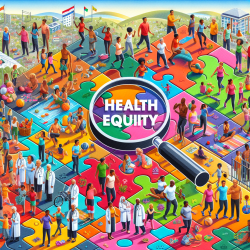As practitioners dedicated to improving outcomes for children with autism, it is essential to explore innovative therapeutic modalities that can significantly enhance their social and communicative skills. A recent study titled ‘It just opens up their world’: autism, empathy, and the therapeutic effects of equine interactions sheds light on the profound impact of equine therapy on children with autism. This blog delves into the key findings of the study and offers practical insights for implementing these therapeutic strategies in your practice.
The Therapeutic Impact of Equine Interactions
The study conducted by Malcolm et al. (2018) at a UK equine therapy center revealed that interactions with horses can significantly improve social behaviors in children with autism. These improvements include increased eye contact, pointing, and speech. The study identified three primary factors contributing to these therapeutic outcomes:
- Sensorial, Embodied Experience: Riding a horse provides a multisensory experience that engages children physically and emotionally, fostering a sense of calm and focus.
- Specific Movements and Rhythms: The rhythmic movements of the horse can help regulate sensory input, which is particularly beneficial for children with sensory processing challenges.
- Horse Personality: The unique personalities of horses can facilitate different types of interactions, helping children to develop empathy and social awareness.
Implementing Equine Therapy in Your Practice
To integrate the benefits of equine therapy into your practice, consider the following steps:
- Partner with Local Equine Therapy Centers: Establish connections with nearby equine therapy centers to facilitate referrals and collaborative care plans.
- Tailor Therapy to Individual Needs: Work with equine therapists to select horses that match the sensory and emotional needs of each child, ensuring a personalized therapeutic experience.
- Monitor and Document Progress: Regularly assess and document the child's progress in social behaviors, communication, and emotional regulation to adjust therapeutic strategies as needed.
- Educate and Involve Parents: Provide parents with information on the benefits of equine therapy and involve them in the therapeutic process to reinforce skills learned during sessions.
Encouraging Further Research
While the study by Malcolm et al. (2018) provides valuable insights, further research is necessary to fully understand the mechanisms behind the therapeutic effects of equine interactions. Practitioners are encouraged to contribute to this growing body of knowledge by conducting their own studies and sharing their findings with the broader community.
In conclusion, equine therapy offers a promising avenue for enhancing empathy and social interaction in children with autism. By incorporating these strategies into your practice, you can help unlock new possibilities for your clients.
To read the original research paper, please follow this link: ‘It just opens up their world’: autism, empathy, and the therapeutic effects of equine interactions.










